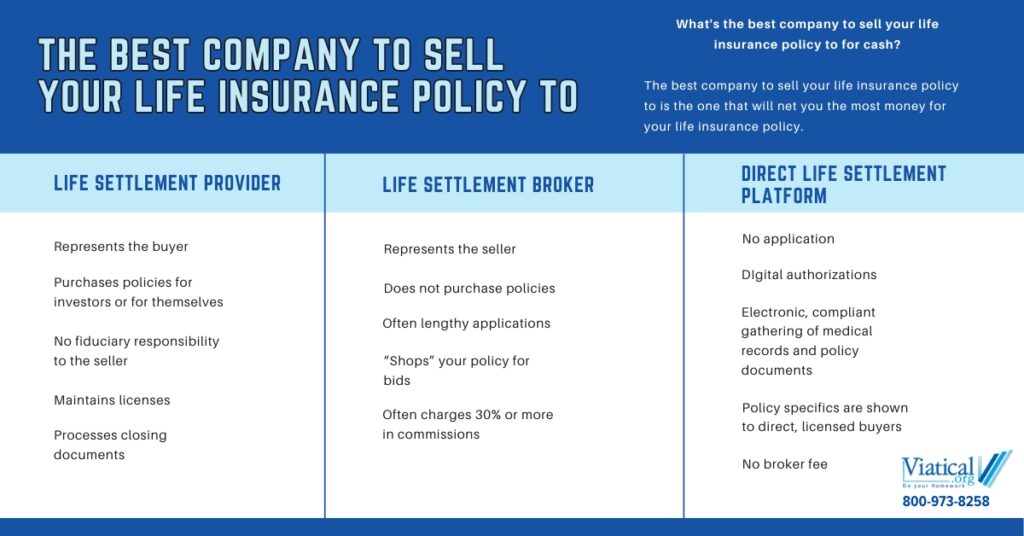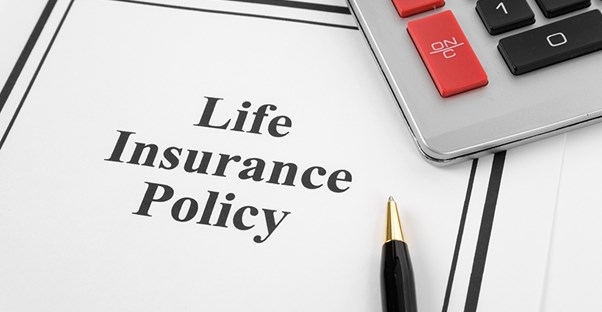Orthopedic Care After a Car Accident
Do you find yourself wincing in pain after a car accident? Even if you don’t feel any discomfort right away, it’s crucial to seek medical attention as soon as possible. A seemingly minor fender bender can cause serious orthopedic injuries that may not manifest themselves for days or even weeks later.
What is Orthopedic Care?
Orthopedic care is a branch of medicine that specializes in diagnosing, treating, and rehabilitating injuries and disorders of the musculoskeletal system, which encompasses bones, joints, muscles, tendons, and ligaments. Orthopedic specialists, often referred to as orthopedic surgeons, possess extensive knowledge and expertise in treating a wide range of conditions, from sprains and fractures to arthritis and sports injuries.
When it comes to car accident injuries, orthopedic care plays a pivotal role in restoring mobility, alleviating pain, and preventing long-term complications. Orthopedic specialists employ a comprehensive approach that may involve a combination of conservative treatments, such as physical therapy and pain management, as well as surgical interventions when necessary.
Common Orthopedic Injuries After a Car Accident
Car accidents can inflict a multitude of orthopedic injuries, ranging from minor soft tissue strains to severe bone fractures. Some of the most common injuries include:
It’s important to note that even if you don’t experience immediate pain or discomfort after an accident, it’s still essential to seek medical attention. Orthopedic injuries can manifest themselves gradually, and early diagnosis and treatment can significantly improve the chances of a successful recovery.
Orthopedic After Car Accident
If you’ve been in a car accident, you may be dealing with a variety of injuries, including orthopedic ones. Orthopedic injuries are those that affect your bones, muscles, and joints. They can range from minor sprains and strains to more serious fractures and dislocations.
How Can a Car Accident Affect Your Orthopedic Health?
Car accidents can cause a wide range of orthopedic injuries, including:
- Fractures: When a bone is broken, it is called a fracture. Fractures can be caused by the direct impact of the accident or by the twisting and turning of the body during the crash.
- Dislocations: A dislocation occurs when a bone is forced out of its joint. This can happen when the ligaments that hold the joint in place are torn or stretched.
- Sprains: A sprain is a tear or stretch of a ligament. Sprains can range from mild to severe, depending on the extent of the injury.
- Strains: A strain is a tear or stretch of a muscle or tendon. Strains can also range from mild to severe, depending on the extent of the injury.
- Back and neck pain: The sudden impact of a car accident can cause the muscles and ligaments in your back and neck to be strained or torn. This can lead to pain, stiffness, and decreased range of motion.
The severity of your orthopedic injuries will depend on a number of factors, including the type of accident, the speed at which you were traveling, and the direction of the impact. If you have been in a car accident, it is important to see a doctor as soon as possible to get evaluated for any potential injuries.
Orthopedic Injuries After Car Accidents: What to Know
If you’ve been in a car accident, you might be wondering if you have any orthopedic injuries. Orthopedic injuries are injuries to the musculoskeletal system, which includes bones, joints, muscles, ligaments, and tendons. These injuries can range from minor to severe, and they can cause a variety of symptoms. It’s important to be able to recognize the symptoms of orthopedic injuries so that you can get the treatment you need.
Symptoms of Orthopedic Injuries
The symptoms of orthopedic injuries can vary depending on the type of injury. Some common symptoms include:
* Pain
* Swelling
* Bruising
* Difficulty moving the affected area
* Numbness or tingling
* Deformity
* Instability
* Weakness
* Grinding or popping noises
* Inability to bear weight
* Loss of range of motion
If you experience any of these symptoms after a car accident, it’s important to see a doctor or orthopedic specialist as soon as possible. Early diagnosis and treatment can help to prevent further damage and improve your chances of a full recovery.
Common Types of Orthopedic Injuries After Car Accidents
Some of the most common types of orthopedic injuries after car accidents include:
* Fractures
* Sprains
* Strains
* Dislocations
* Ligament tears
* Tendon injuries
* Muscle injuries
* Nerve injuries
* Back injuries
* Neck injuries
Treatment for Orthopedic Injuries
The treatment for orthopedic injuries will vary depending on the type and severity of the injury. Treatment may include:
* Rest
* Ice
* Compression
* Elevation
* Medication
* Physical therapy
* Surgery
In some cases, orthopedic injuries may require surgery to repair damaged tissues or to stabilize the injured area. Surgery is typically only necessary for severe injuries.
Recovering from Orthopedic Injuries
Recovery from orthopedic injuries can take time and effort. It’s important to follow your doctor’s instructions carefully and to attend all of your physical therapy appointments. With proper care, most people are able to make a full recovery from orthopedic injuries.
Understanding Orthopedic Injuries After Car Accidents: A Comprehensive Guide
Orthopedic injuries are a common consequence of car accidents, ranging from minor sprains to severe fractures. Seeking proper medical attention promptly is crucial for minimizing pain and maximizing recovery prospects. This comprehensive guide will delve into the various treatment options available for orthopedic injuries sustained in car accidents, empowering you with the knowledge to make informed decisions regarding your recovery.
Types of Orthopedic Injuries After Car Accidents
The forces involved in a car accident can impact the body in numerous ways, resulting in a wide range of orthopedic injuries. These can include:
- sprains and strains
- dislocations
- fractures
- ligament and tendon tears
- nerve damage
Treatment Options for Orthopedic Injuries
Treatment options for orthopedic injuries vary depending on the severity and type of injury and may include:
- Rest: Limiting movement and activity allows the injured area to heal.
- Ice: Applying ice reduces inflammation and pain.
- Compression: Wrapping the injured area can help reduce swelling.
- Elevation: Keeping the injured area above the level of the heart promotes circulation and reduces swelling.
- Medication: Over-the-counter or prescription pain relievers and anti-inflammatories can help manage pain and swelling.
- Physical therapy: Exercises and treatments can help restore strength, range of motion, and function.
- Surgery: In some cases, surgery may be necessary to repair or reconstruct damaged bones, ligaments, or tendons.
Long-Term Consequences of Orthopedic Injuries
Depending on the severity of the injury, it may take weeks, months, or even years to recover. Without proper rehabilitation, orthopedic injuries can lead to chronic pain, reduced mobility, and a diminished quality of life. Therefore, following the prescribed treatment plan, including physical therapy and regular exercise, is essential for maximizing recovery and preventing long-term complications.
Preventing Orthopedic Injuries in Car Accidents
While not all orthopedic injuries can be prevented, taking certain precautions can reduce the risk. Some tips include wearing a seatbelt, maintaining a safe following distance, avoiding distractions while driving, and keeping your vehicle in good working order.
When to Seek Medical Attention
If you experience any pain or discomfort after a car accident, seek medical attention immediately. Even minor injuries can worsen over time if left untreated. By getting prompt medical care, you can increase your chances of a full and speedy recovery.
Orthopedic After Car Accident
Car accidents can be traumatic experiences that lead to a range of injuries, including orthopedic injuries. These injuries can affect the muscles, bones, ligaments, and tendons, causing pain, discomfort, and limited mobility. If you’ve been involved in a car accident, it’s crucial to seek professional help from an orthopedic surgeon to assess and treat your injuries effectively.
Importance of Seeking Professional Help
After a car accident, it’s essential to consult an orthopedic specialist to ensure proper diagnosis and treatment of any orthopedic injuries. Orthopedic surgeons have specialized training and experience in treating musculoskeletal conditions and injuries. They can accurately assess the extent of your injuries, determine the underlying causes, and develop a personalized treatment plan to restore your mobility and function.
Types of Orthopedic Injuries
Car accidents can cause various types of orthopedic injuries, including:
- Bone fractures
- Ligament sprains
- Tendon injuries
- Muscle strains
- Dislocations
Symptoms of Orthopedic Injuries
Symptoms of orthopedic injuries can vary depending on the type and severity of the injury. Common symptoms include:
- Pain
- Swelling
- Bruising
- Difficulty moving the injured area
- Deformity
Treatment Options
Treatment for orthopedic injuries after a car accident depends on the specific injury and its severity. Treatment options may include:
- Medication
- Physical therapy
- Surgery
- Immobilization
- Rehabilitation
Orthopedic Injuries After a Car Accident: A Guide to Recovery and Rehabilitation
Orthopedic injuries sustained in car accidents can be debilitating, but they don’t have to hold you back from putting your life back together. If this has happened to you, it’s imperative that you seek proper medical attention to address your injuries and develop a personalized rehabilitation plan.
It’s like being lost in a dense forest after a storm. You need a compass to guide you back to the path of recovery and a skilled team of medical professionals to help you navigate the journey. This article explores the various facets of orthopedic rehabilitation after a car accident, equipping you with the knowledge you need to make informed decisions about your treatment and maximize your recovery.
Types of Orthopedic Injuries
Car accidents can cause a wide range of orthopedic injuries, including:
- Bone fractures
- Ligament and tendon tears
- Cartilage damage
- Joint dislocations
- Nerve damage
The severity of these injuries can vary significantly, depending on the force of the impact and the specific body parts involved.
Diagnosis and Treatment
An accurate diagnosis of orthopedic injuries is crucial for proper treatment. This typically involves a physical examination, imaging tests such as X-rays or MRIs, and a review of your medical history. Based on the diagnosis, your doctor will recommend a treatment plan that may include a combination of:
- Rest and immobilization
- Medications for pain management
- Physical therapy
- Surgery
Recovery and Rehabilitation
Recovery and rehabilitation from orthopedic injuries can be a lengthy process that requires patience and adherence to medical advice. It often involves:
- Physical therapy to improve range of motion, strength, and coordination
- Exercises to strengthen muscles and improve joint stability
- Lifestyle modifications, such as avoiding activities that put stress on the injured area
- Pain management techniques
- Nutritional support to aid healing
- Psychological counseling to address emotional challenges associated with the injury and recovery process
The timeline for recovery varies depending on the severity of the injuries. It’s important to follow your doctor’s instructions carefully and attend all physical therapy appointments to maximize your chances of a full recovery.
Physical Therapy
Physical therapy is an essential component of orthopedic rehabilitation. It helps to restore range of motion, strength, and coordination to the injured area. Physical therapists will guide you through a series of exercises and activities tailored to your specific needs. Active participation in physical therapy can significantly improve your recovery outcomes.
Pain Management
Managing pain is crucial for both comfort and recovery. Your doctor may prescribe medications to alleviate pain. However, it’s important to use them as directed and explore non-pharmacological pain management techniques, such as heat or cold therapy, massage, and relaxation techniques. Finding a balance between pain relief and avoiding over-medication is key.
Lifestyle Modifications
Lifestyle modifications can play a vital role in supporting your recovery. These may include:
- Avoiding strenuous activities that put stress on the injured area
- Maintaining a healthy weight to reduce pressure on joints
- Getting enough sleep to allow the body to heal
- Following a healthy diet to support overall health and healing
- Quitting smoking, as it can hinder recovery
Conclusion
Recovering from orthopedic injuries after a car accident can be a challenging but manageable journey. With the right medical guidance, dedication to rehabilitation, and adherence to lifestyle modifications, you can regain your mobility, function, and overall well-being. Remember, consistency and patience are your allies on this road to recovery.
Orthopedic Injuries After a Car Accident: A Guide to Prevention and Treatment
Car accidents are a common cause of orthopedic injuries, which can range from minor sprains and strains to serious fractures and dislocations. While it’s impossible to completely prevent car accidents, there are steps you can take to reduce your risk of these injuries.
Prevention
First and foremost, always wear your seatbelt. This is the single most effective way to protect yourself from orthopedic injuries in a car accident. Seatbelts keep you in place and prevent you from being thrown around the vehicle, which can cause serious injuries to your spine, neck, and head.
In addition to wearing your seatbelt, you should also drive defensively. This means being aware of your surroundings and anticipating potential hazards. Leave yourself plenty of following distance, and be prepared to brake or swerve if necessary.
Third, maintain your vehicle regularly. This includes getting regular oil changes, tire rotations, and brake inspections. A well-maintained vehicle is less likely to break down or malfunction, which can reduce your risk of an accident.
Symptoms
If you’re involved in a car accident, even a minor one, it’s important to be aware of the potential symptoms of orthopedic injuries. These can include:
- Pain
- Swelling
- Bruising
- Deformity
- Numbness or tingling
- Weakness
Treatment
If you experience any of these symptoms, it’s important to see a doctor as soon as possible. Orthopedic injuries can be serious, and early treatment can help to prevent long-term complications.
Treatment for orthopedic injuries may include:
- Rest
- Ice
- Compression
- Elevation
- Medication
- Physical therapy
- Surgery
Recovery
The recovery time for orthopedic injuries varies depending on the severity of the injury. Minor injuries may only require a few days of rest and ice, while more serious injuries may require months or even years of rehabilitation.
It’s important to follow your doctor’s instructions closely during the recovery process. This will help to ensure that you heal properly and avoid further complications.




Leave a Reply